Germination
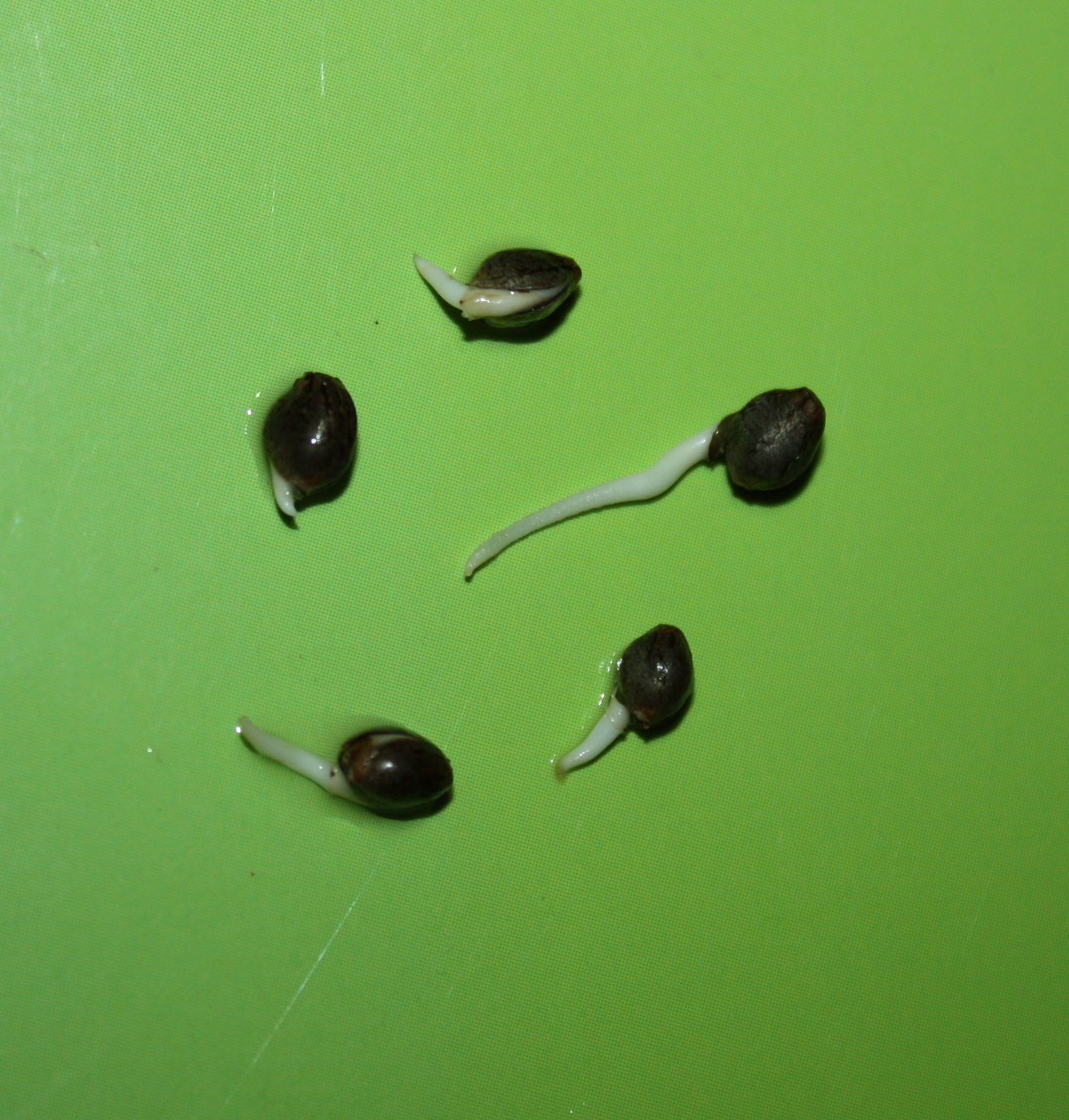
Germination in soil
The first condition for a good germination rate is the right temperature : 19 – 24°C with an optimal of 22°C. It’s better to use rainwater or distilled water according to the quality of your tap water.
To be sure to have a good start, things have to be clean. Make sure soil, pots, tray, grow room and your hands are clean.
You can put your seeds in a glass of water overnight but it's not necessary, and be carefull, in bad conditions it might kill the sprout. Many breeders recommend germinating seeds directly in the substrate.
Make sure the soil is clean and without any flies or mold. Fill the pot with the soil, make sure there are holes at the bottom of the pot to allow water to drain. Before putting the seed in the soil, water the soil well. Place the seed around 5 – 10 mm depth in the soil. Cover gently the seed with soil, tamp it super gently. Water the soil with a lot of care to avoid moving the seed.
The soil should be moist at all times. After a few days, the seedling should show itself and open the cotyledons.
Germination in cotton wool
The first condition for a good germination rate is the right temperature : 19 – 24°C with an optimal of 22°C. It’s better to use rainwater or distilled water according to the quality of your tap water.
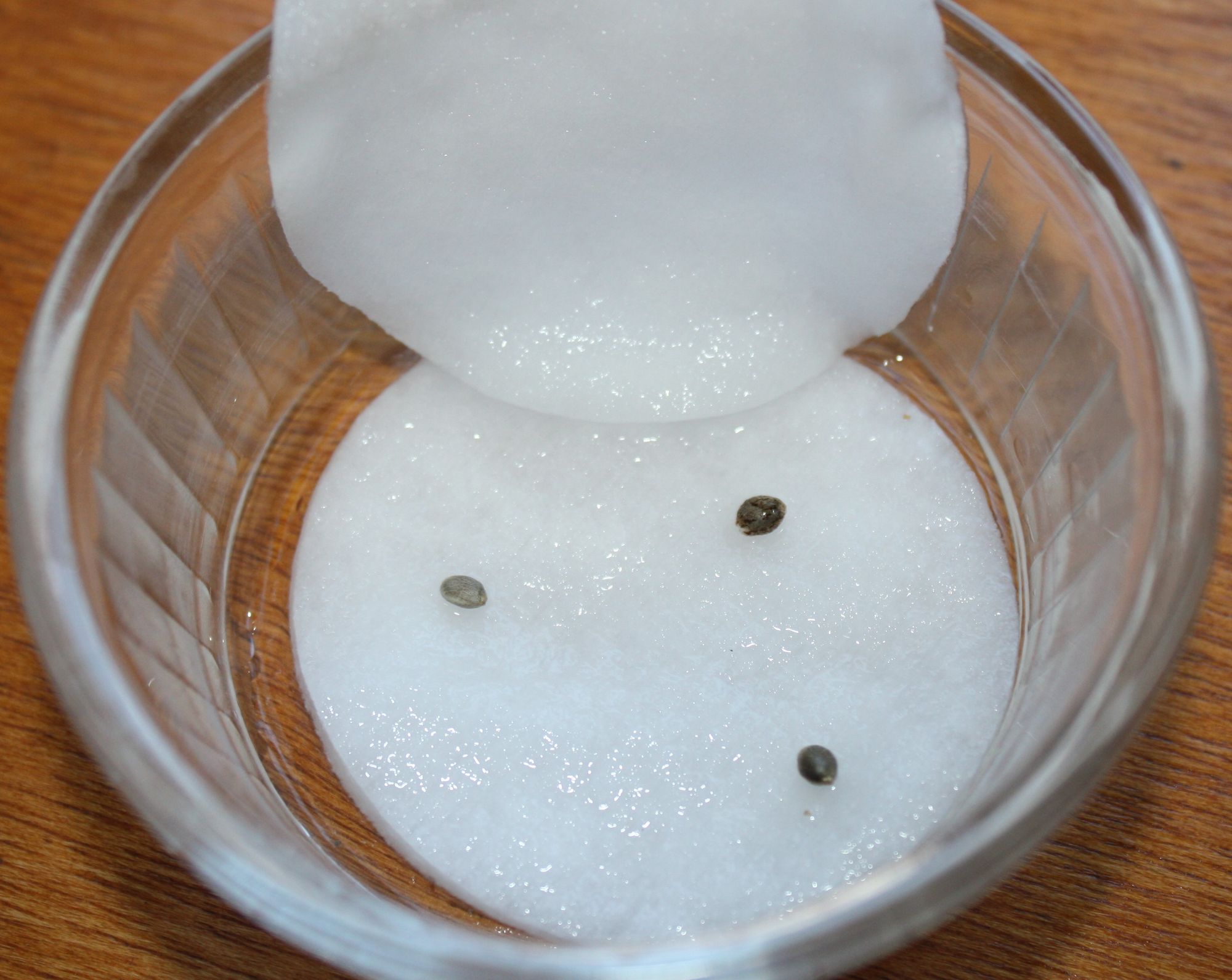
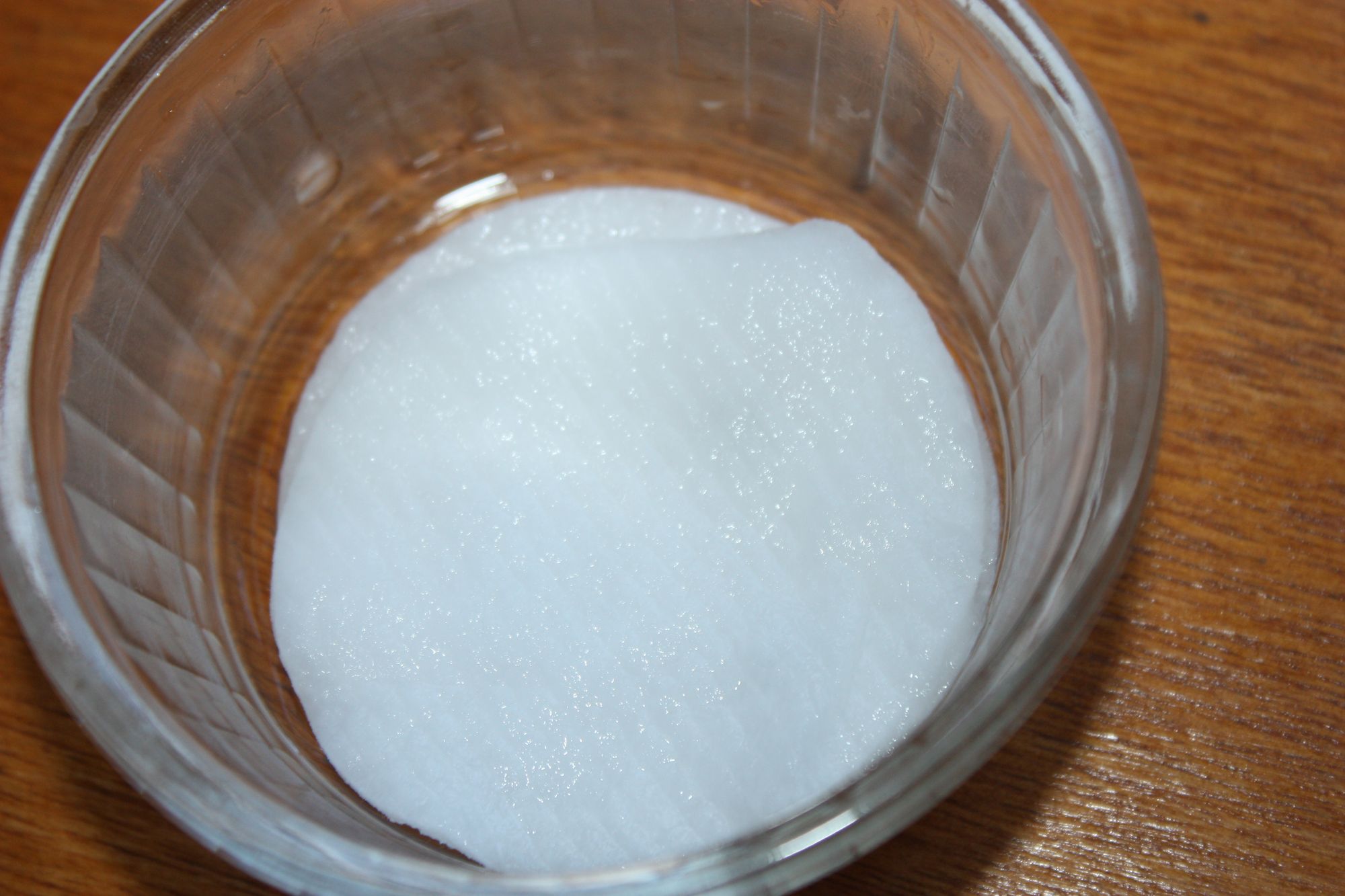
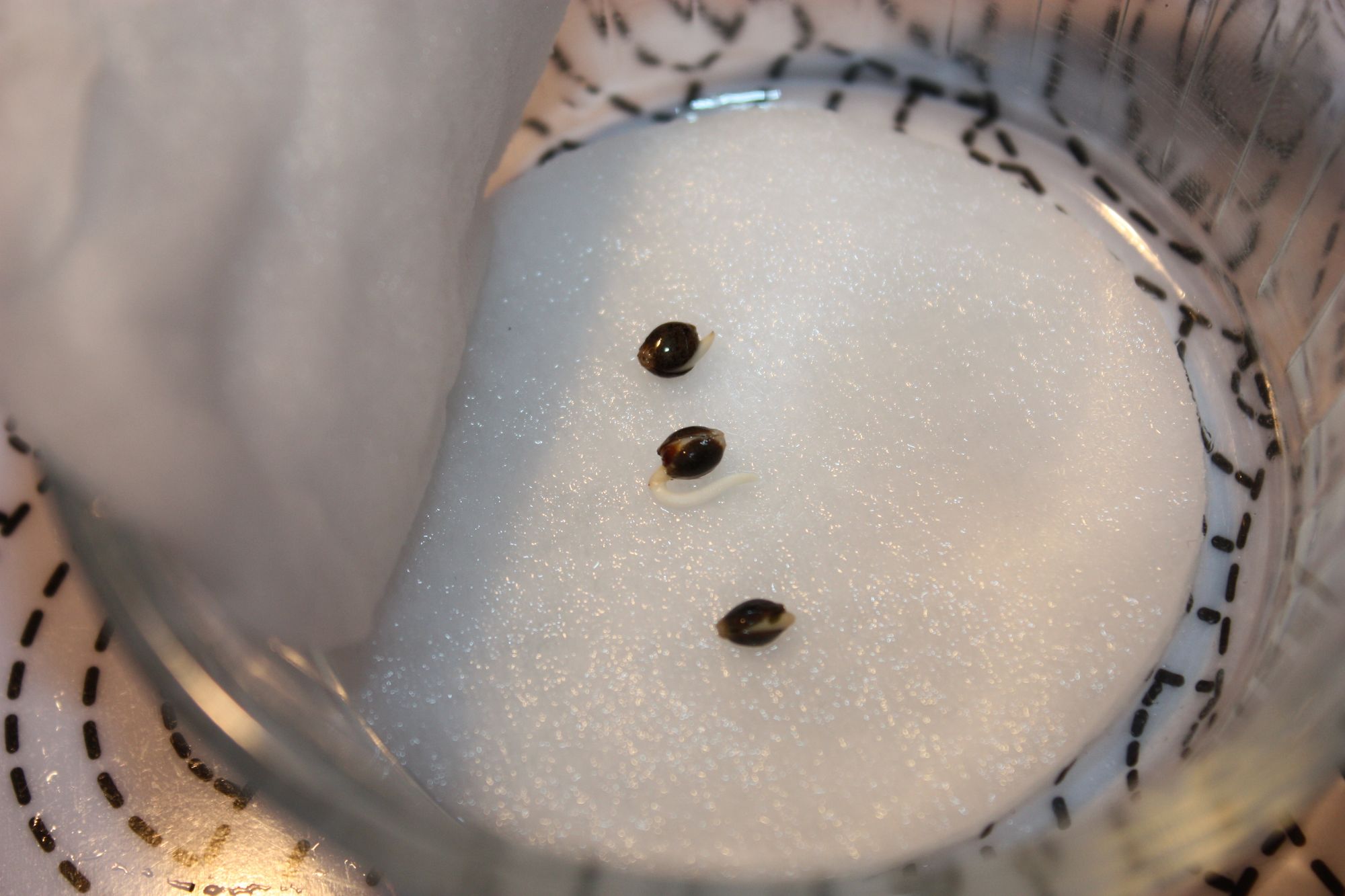
To be sure to have a good start, things have to be clean. Make sure soil, pots, tray, grow room and your hands are clean.
Put your seeds between 2 cotton wool (like makeup remover), place them in a little plate with water, just enough that the wool gets moist. After 2 or 3 days, you will see that the seeds have germinated. Put them in their definitive place before the radicle becomes too long.
Be very careful as the little root is very fragile.
Make a pot ready with wet soil in it, place gently the seed on the soil, with the root going down, cover super gently the roots and water again super gently to don't disturb the seedling.
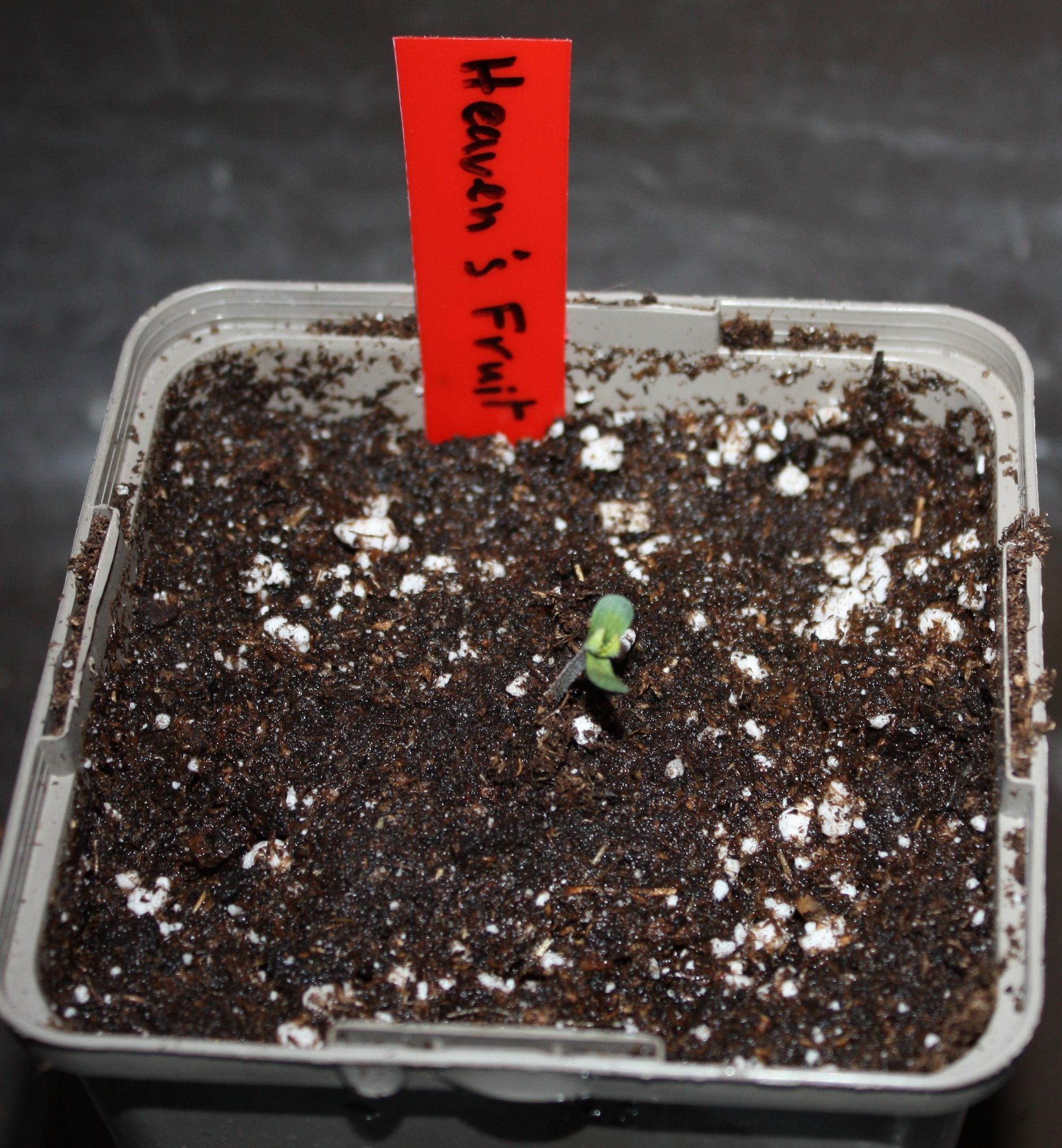
If you’re on a hydroponique set-up, you can transfer the seedling to a rockwool cube or directly in the substrate.
Germination in rockwool
The first condition for a good germination rate is the right temperature : 19 – 24°C with an optimal of 22°C. It’s better to use rainwater or distilled water according to the quality of your tap water.
To be sure to have a good start, things have to be clean. Make sure soil, pots, tray, grow room and your hands are clean.
First, water the rock-wool until fully wet. Place the seeds directly in the hole, make sure the seed is around 5 mm depth. The rock-wool should be moist at all times. After a few days, the seedling should appear and rootlets will get out of the rock-wool. Don’t wait to put the seedlings in the growing place and give them light !
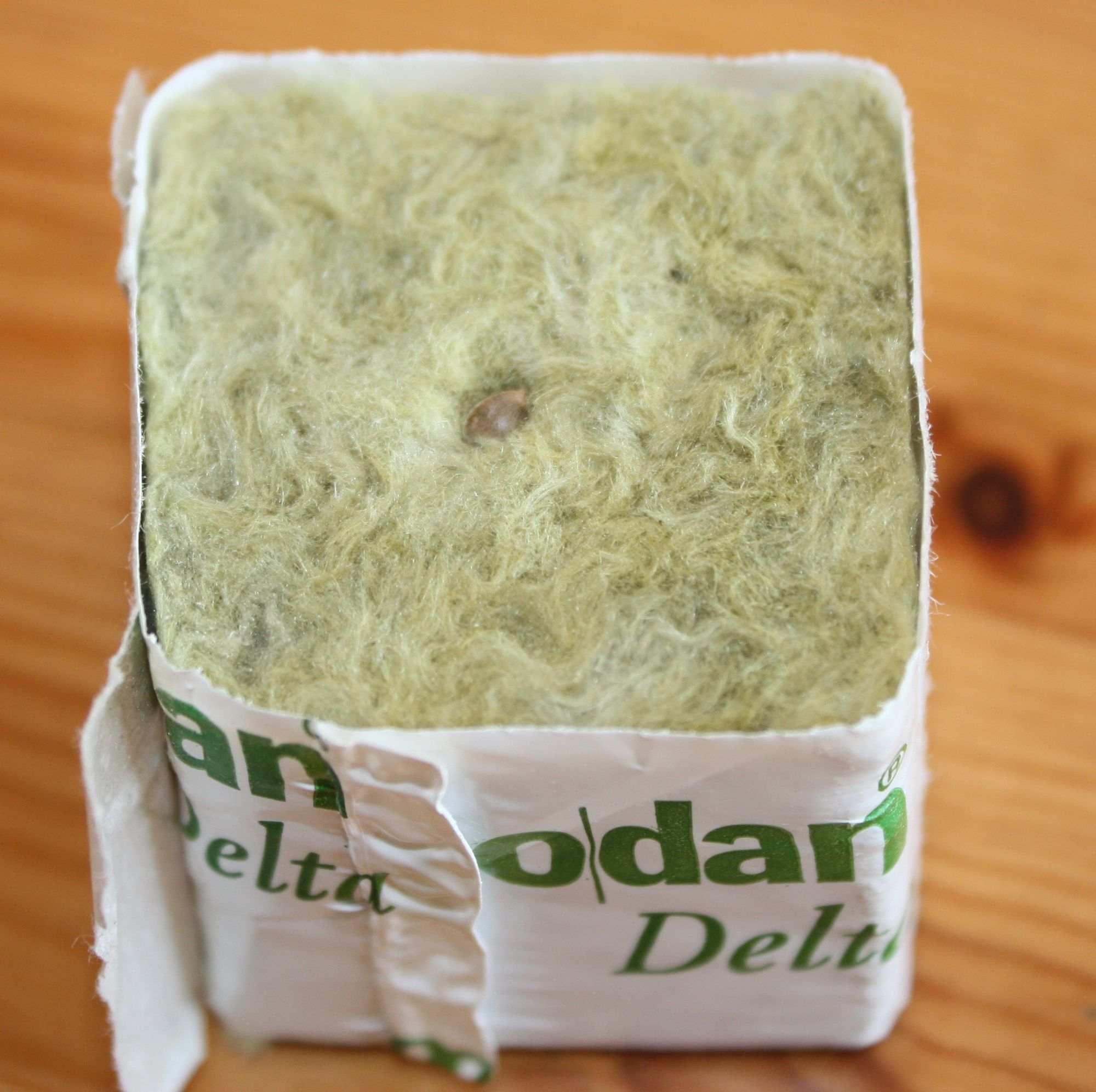
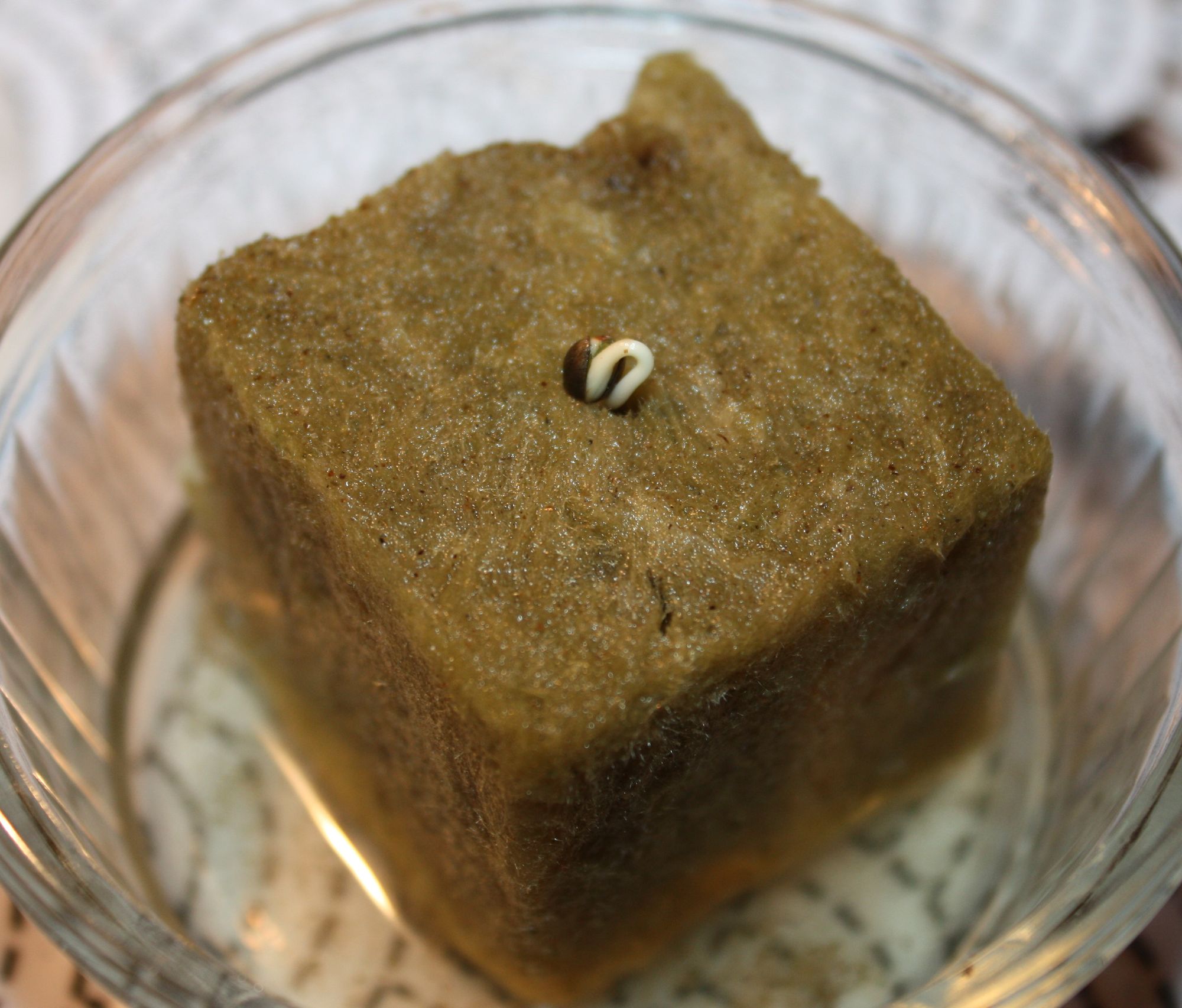
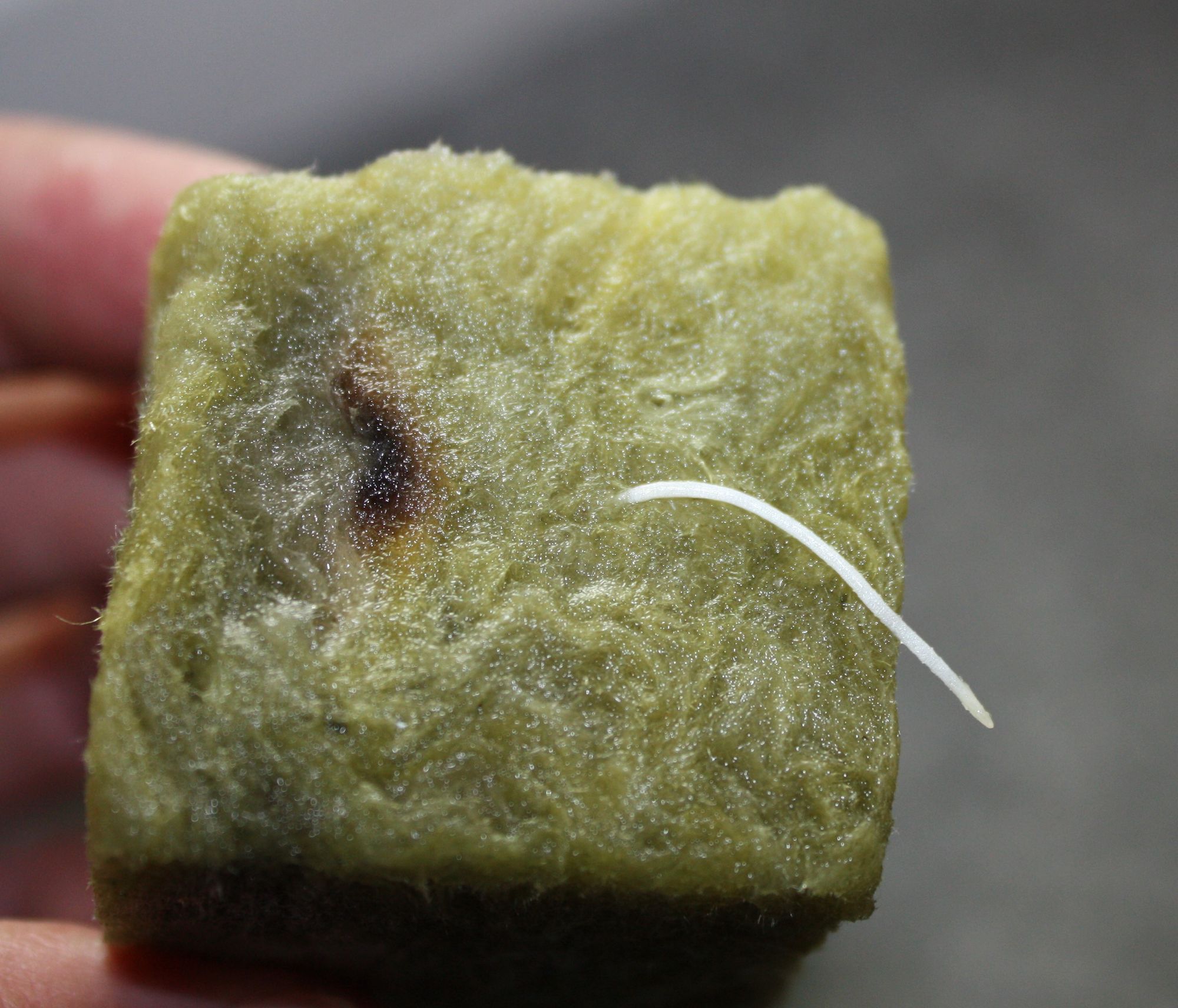
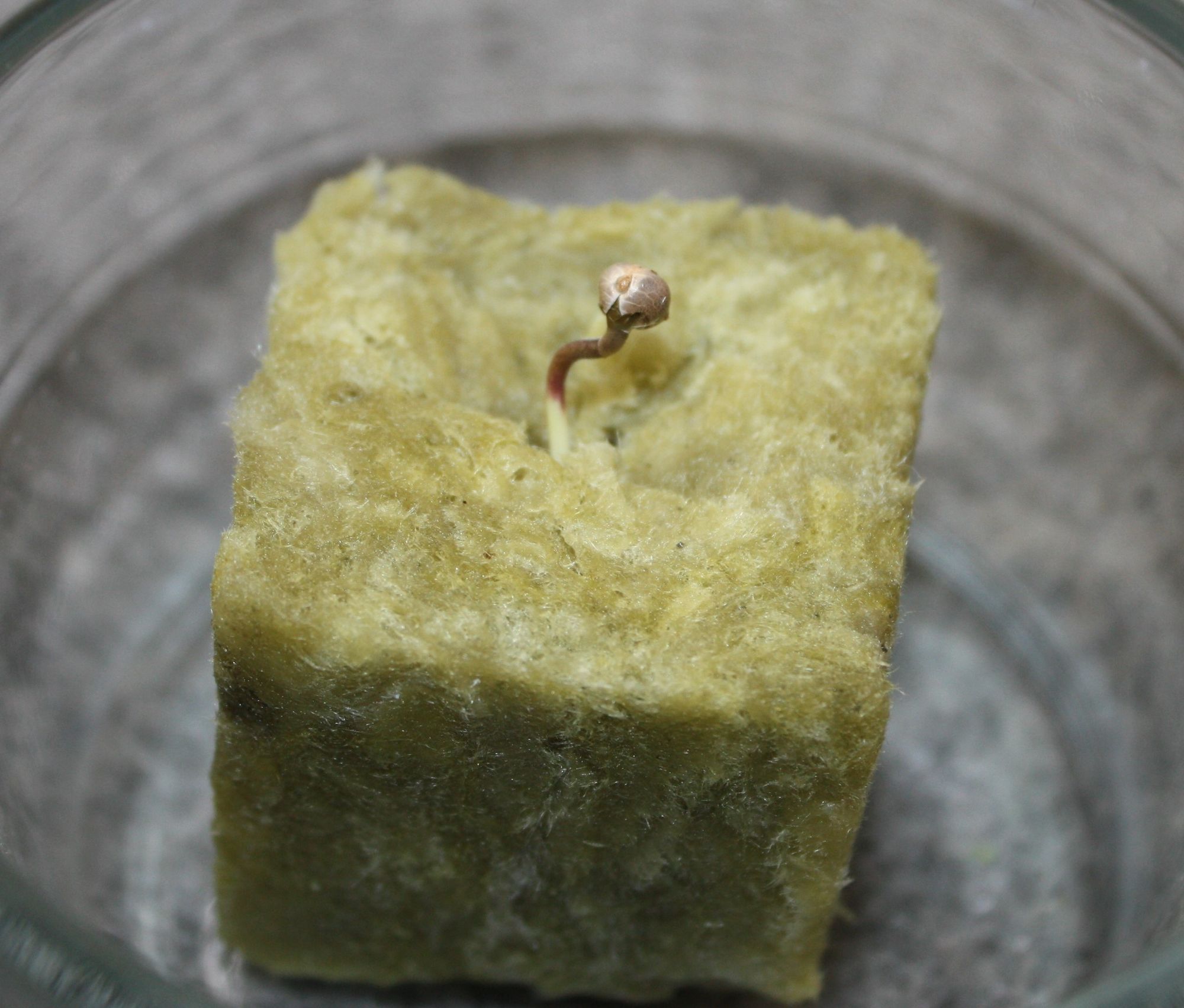
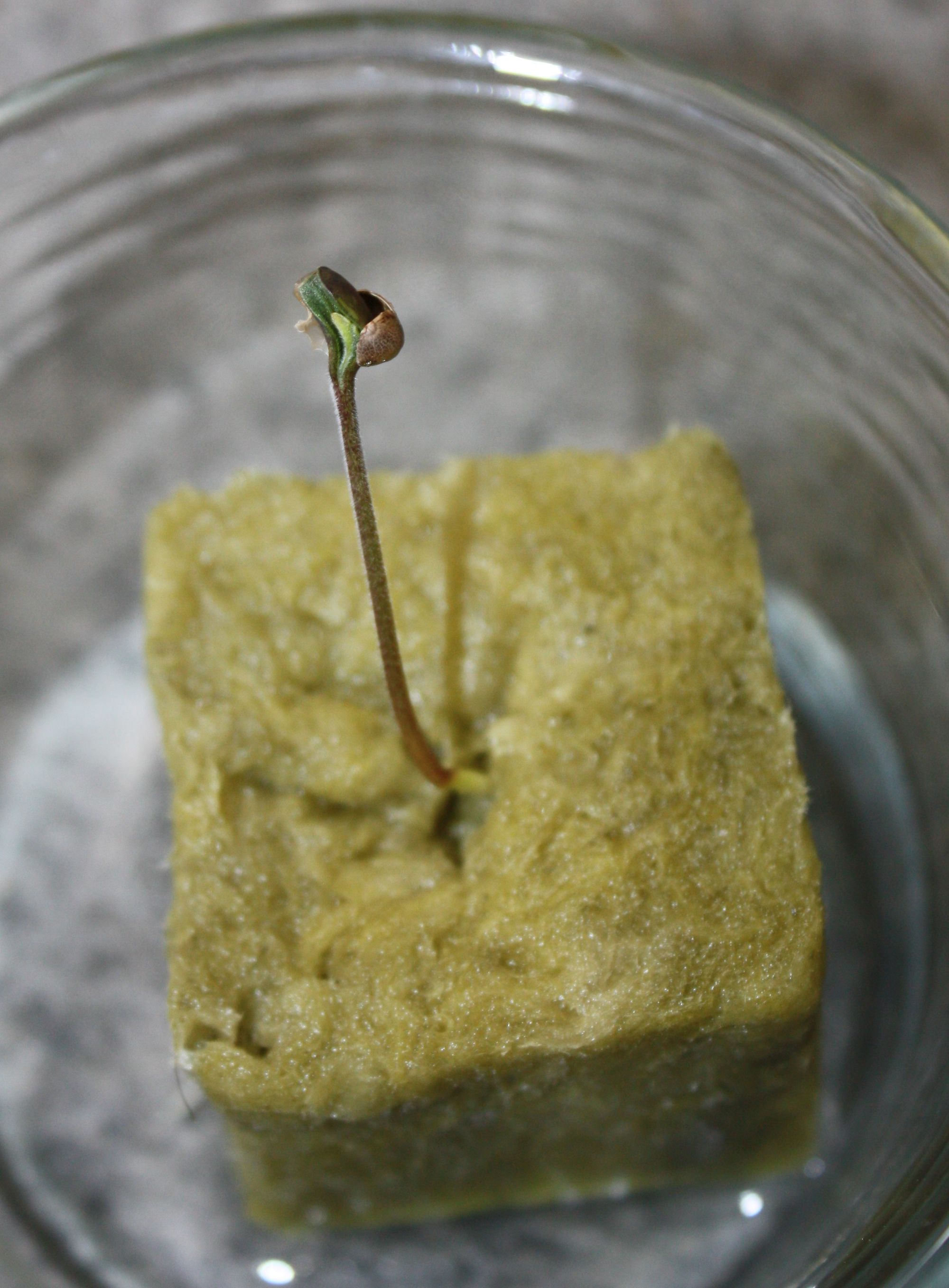
After germination, you can use any substrate, from soil to hydroponique or even aeroponic…
From time to time, a seedling has problems rising from the rockwool, you can help by weakening and opening the rockwool around it. It can also happen that instead of the cotyledon showing up, you’ll have the radicle. It is because the seedling doesn’t have the space to turn over inside the rockwool. To fix this, simply pick up the radicle super gently, pick the whole seedling out and place it back in the right position. Always water after such manipulation. If gentle enough, the seedling will feel nothing from what you have done.
Germination trouble-shoot
Sometimes, seedlings need a little help to arise. If you have to take action, give special care because it is insanely fragile.
Keep your seeds in a hermetic box in the fridge. That way, seeds are dormant and remain alive for years. Some strains ask for a dormancy period before germinating. So if your seeds are fresh but don’t germinate, put them in your fridge for 1 week, and then try to germinate them.
Damping-off
If the seed has started to germinate and suddenly stopped, it’s probably a fungus or bacterial problem. Same if the seedling, after 1 week or so starts to mold and die. It’s the damping-off. When you face this problem, it’s already too late, you can’t do much to save your seedlings.
The only solution is to prevent it. Before starting the seedlings, clean everything you can, including the room where you grow. Everything has to be clean, your hands too !
Give special care to the origin of your substrate and it’s quality, very often problems come from bad soils from bad retailers.
To stake all the odds in your favour, you can use beneficial fungus. The most common is Trichoderma harzianum but many different species exist and make a symbiotic relation with the plant, giving it an extra strength and hardiness.
Over stretching
When the seedling lacks light, it will start to stretch to look for more light. This stretching can make the stem very weak.
Three ways to deal with it :
Bend the seedling super gently, and recover it with soil.
Repot and bury the whole stem, letting only the cotyledon out of the soil.
Use a little stake to support the seedling.
